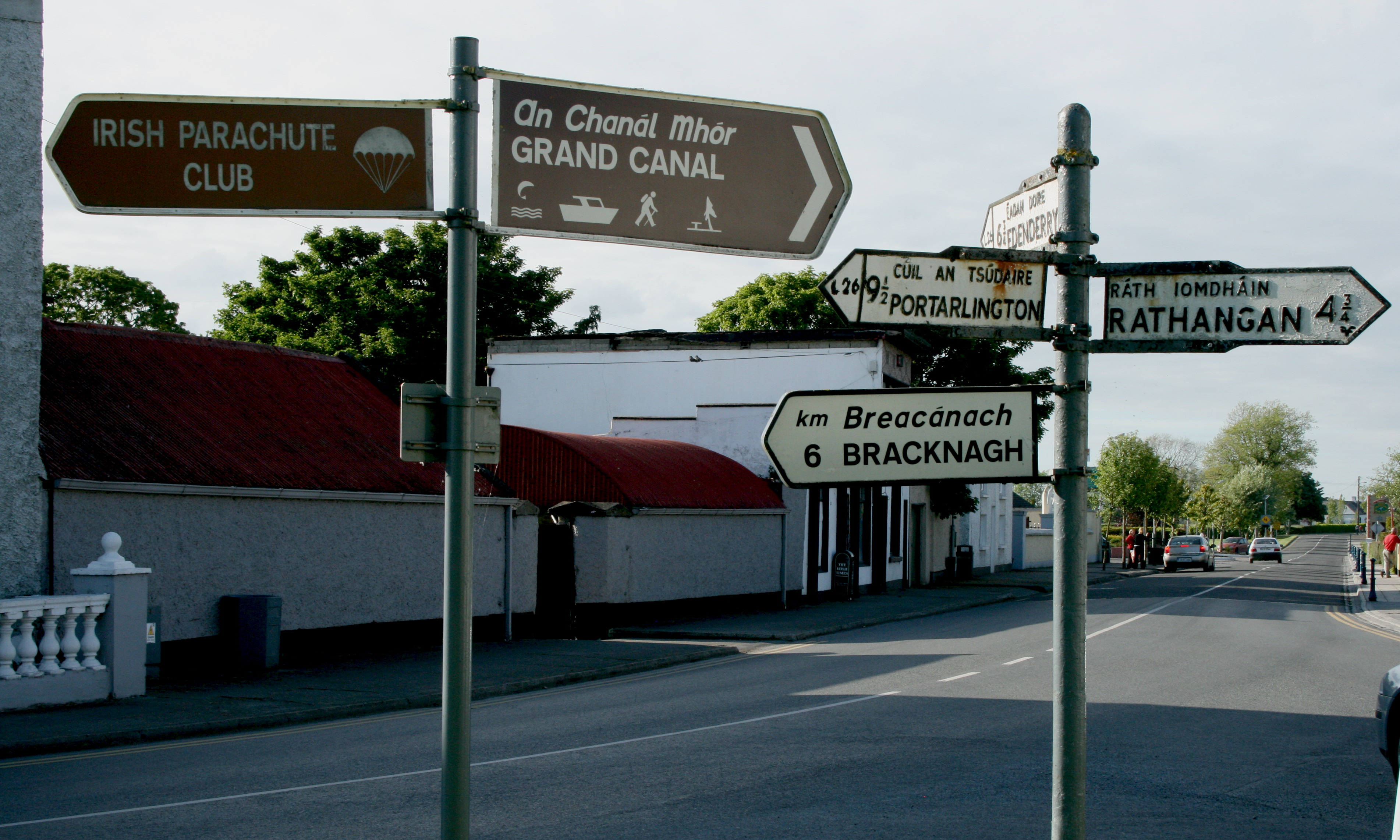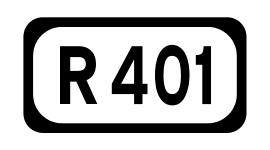|
Figile
The Figile River (; ga, Abhainn Fhiodh Gaibhle) is a river in eastern Ireland. Name The earliest recorded name is ''Fidgable''/''Fid nGabli'', meaning "Gabul's Wood", recorded in the Book of Leinster and the Metrical Dindshenchas, both c. 1160. It is also mentioned in Buile Shuibhne ("Suibhne's Frenzy", 12th century) as ''Fiodh Gaibhle'', a site of refuge for the maddened Suibhne where he lived for a year, eating holly berries and acorns and drinking from ''uisci na Gabhla'' ("Gabul's waters"). The Anglicisation ''Fegowly'' first appears in the 17th century, becoming ''Feagile'' on Alex Taylor's 1783 map and ''Figile'' on the 1843 Ordnance Survey map. It was here that Fionn Mac Cumhaill is said to have been concealed by his mother Muirne from his family's enemies and brought up by her sisters deep in the woods after the killing of his father. Course The Figile River begins at the union of the Crabtree and Cushaling rivers, near the County Kildare-County Offaly border. It meet ... [...More Info...] [...Related Items...] OR: [Wikipedia] [Google] [Baidu] |
Slate River (Ireland)
The Slate River ( ga, An Tarae) or River Slate is a river in County Kildare and County Offaly, Ireland, a tributary of the Figile River. Name Its name derives from the slate quarries in the region. The Irish language name derives from Wiktionary:tarae, ''tarae'', meaning mill race, referring to Sally Corn Mill, Rathangan, County Kildare, Rathangan. The river was historically known as the Clashaghbane River. Course Slate River rises near Ballynafagh Lake in Prosperous, County Kildare, Prosperous and flows southwest, passing under the R403 road (Ireland), R403 road at Graigues. It continues westward parallel to, and north of, the Grand Canal (Ireland), Grand Canal. The Slate passes under the Grand Canal via the Derrymullen aqueduct and is bridged by the R415 road (Ireland), R415 at Littletown. The Slate River continues through Ballyteague Forest and passes by the Lullymore Heritage and Discovery Park on the Bog of Allen. It passes through Rathangan, County Kildare where it passe ... [...More Info...] [...Related Items...] OR: [Wikipedia] [Google] [Baidu] |
Monasterevin
Monasterevin (), also Monasterevan, and Mevin is a town in County Kildare, Ireland. The town lies on the River Barrow and the Barrowline, a canal branch of the Grand Canal. The population was 4,246 at the 2016 Census. Location and Access Situated 63 km from Dublin on the R445 road, Monasterevin has been relieved of much through-traffic by the opening in 2004 of a section of the M7 motorway bypassing the town on the N7 Dublin to Limerick route. Monasterevin railway station is on InterCity rail lines for trains from Dublin to the southwest (Cork, Limerick and Tralee) and west (Galway and Mayo). The town is also on Ireland's canal network, linking the Grand Canal and the River Barrow. History Monasterevin is situated on the border of County Kildare and County Laois. The towns and districts of Rathangan, Kildare, Portarlington and Athy surround the parish. The main geographical features of the countryside are the River Barrow, its tributaries, the extensive bogland an ... [...More Info...] [...Related Items...] OR: [Wikipedia] [Google] [Baidu] |
R401 Road (Ireland)
The R401 road is a regional road in Ireland, linking Kinnegad in County Meath to Kildare town in County Kildare. The total length of the R401 is . Route The official description of the R401 from the ''Roads Act 1993 (Classification of Regional Roads) Order 2012'' '' Irish Statute Book''. 2012-02-28. reads: :R401: Kinnegad, County Westmeath — Edenderry, County Offaly — Kildare Between its junction with R148 at Rossan in the county of [...More Info...] [...Related Items...] OR: [Wikipedia] [Google] [Baidu] |
Clonbulloge
Clonbullogue or Clonbolloge () is a village in County Offaly, Ireland. Location The village is located at the junction of the R401 and R442 regional roads. The ''Figile River'' runs through the village under the R442 near its confluence with the ''Philipstown River''. Between the village and Edenderry, 11 km to the north, lies the Bog of Allen. Clonbullogue is located near the point where three counties—Offaly, Laois and Kildare meet. The village is on an island of pasture land in the bog of Allen. The area is marked on the Cottonian map 1653 of Leix & Offaly as Clanbolg. In the 1659 Census, Robert Shallcross was listed as the titled person in the area. In 1679, Charles II granted this area to the Purefoy family and for a time the village was called Purefoy's Place. In 1798, the village was burned—the only part of Offaly to suffer this fate during the Rebellion. Two of the Wexford leaders, Colonel Anthony Perry and Father Mogue Kearns were captured here and were ... [...More Info...] [...Related Items...] OR: [Wikipedia] [Google] [Baidu] |
Rivers Of Ireland
Shown here are all the major rivers and tributaries of Ireland with their lengths (in kilometres and miles). Starting with the Northern Ireland rivers, and going in a clockwise direction, the rivers (and tributaries) are listed in regard to their entry into the different seas: the Irish Sea, the Celtic Sea and the Atlantic Ocean. Also shown are two tables. ''Table 1'' shows the longest rivers in Ireland with their lengths (in kilometres and miles), the counties they flow through, and their catchment areas (in square kilometres). ''Table 2'' shows the largest rivers in Ireland (by mean flow) in cubic metres per second. The longest river in Ireland is the River Shannon, at . The river develops into three lakes along its course, Lough Allen, Lough Ree and Lough Derg. Of these, Lough Derg is the largest. The Shannon enters the Atlantic Ocean at the Shannon Estuary. Other major rivers include the River Liffey, River Lee, River Swilly, River Foyle, River Lagan, River Erne, River Bla ... [...More Info...] [...Related Items...] OR: [Wikipedia] [Google] [Baidu] |
Bracknagh
Bracknagh or Bracnagh () is a small village in County Offaly, Ireland. It is at the junction of the R442 and R419 regional roads, halfway between Portarlington and Rathangan (8 km from both). It is thought that the settlement began with a small cluster of homes built around the road junction. Expansion along connected roads included the addition of two housing developments called, "The Ring" and "The Green" by Offaly County Council and Bord na Mona. Due to the nearest postal sorting office being in Kildare, Bracknagh is listed as a Kildare address, though it is in County Offaly. Bracknagh is home to the Ballynowlart church, where the history reports that the congregation were burned alive in the 1600s. Bracknagh is home to St Broughan's Well, the water from which is reputed to be a cure for headaches. Bracknagh has a national school which in the early 2000s received a facelift which combined a new build and the older section of the school. Bracknagh GAA is the local ... [...More Info...] [...Related Items...] OR: [Wikipedia] [Google] [Baidu] |
R442 Road (Ireland)
The R442 road is a regional road in Ireland, located in County Offaly County Offaly (; ga, Contae Uíbh Fhailí) is a county in Ireland. It is part of the Eastern and Midland Region and the province of Leinster. It is named after the ancient Kingdom of Uí Failghe. It was formerly known as King's County, in hono .... References Regional roads in the Republic of Ireland Roads in County Offaly {{Ireland-road-stub ... [...More Info...] [...Related Items...] OR: [Wikipedia] [Google] [Baidu] |
Rivers Of County Kildare
A river is a natural flowing watercourse, usually freshwater, flowing towards an ocean, sea, lake or another river. In some cases, a river flows into the ground and becomes dry at the end of its course without reaching another body of water. Small rivers can be referred to using names such as creek, brook, rivulet, and rill. There are no official definitions for the generic term river as applied to geographic features, although in some countries or communities a stream is defined by its size. Many names for small rivers are specific to geographic location; examples are "run" in some parts of the United States, "burn" in Scotland and northeast England, and "beck" in northern England. Sometimes a river is defined as being larger than a creek, but not always: the language is vague. Rivers are part of the water cycle. Water generally collects in a river from precipitation through a drainage basin from surface runoff and other sources such as groundwater recharge, springs, an ... [...More Info...] [...Related Items...] OR: [Wikipedia] [Google] [Baidu] |
Northern Pike
The northern pike (''Esox lucius'') is a species of carnivorous fish of the genus '' Esox'' (the pikes). They are typical of brackish and fresh waters of the Northern Hemisphere (''i.e.'' holarctic in distribution). They are known simply as a pike in Britain, Ireland, and most of Eastern Europe, Canada and the United States. Pike can grow to a relatively large size: the average length is about , with maximum recorded lengths of up to and published weights of . The IGFA currently recognizes a pike caught by Lothar Louis on Greffern Lake, Germany, on 16 October 1986, as the all-tackle world-record northern pike. Northern pike grow to larger sizes in Eurasia than in North America, and typically grow to larger sizes in coastal than inland regions of Eurasia. Etymology The northern pike gets its common name from its resemblance to the pole-weapon known as the pike (from the Middle English for 'pointed'). Various other unofficial trivial names are common pike, Lakes pike, great n ... [...More Info...] [...Related Items...] OR: [Wikipedia] [Google] [Baidu] |
Common Rudd
The common rudd (''Scardinius erythrophthalmus'') is a bentho-pelagic freshwater fish, widely spread in Europe and middle Asia, around the basins of the North, Baltic, Black, Caspian and Aral seas. Identification Morphologically, this species is very similar to the roach ('' Rutilus rutilus''), with which it can be easily confused. It can be identified by the yellow eye colour. The eye of the roach has a big red spot above the pupil, that can be more or less conspicuous. The rudd has an upturned mouth allowing it to feed easily at the top of the water. The placement of the dorsal fin is more to the rear which is even visible in very young fish. There are normally only one or two scales between the tip of the pelvic fins and the anal fins, while on the roach there are five. Also the skin of the rudd is yellowish green, while the roach is bluish on the flanks. Also the upturned mouth is visible even in young fish. Furthermore, the rudd's number of soft rays in the dorsal fin (8� ... [...More Info...] [...Related Items...] OR: [Wikipedia] [Google] [Baidu] |
Common Bream
The common bream, freshwater bream, bream, bronze bream, carp bream or sweaty bream (''Abramis brama''), is a European species of freshwater fish in the family Cyprinidae. It is now considered to be the only species in the genus ''Abramis''. Range and habitat The common bream's home range is Europe north of the Alps and Pyrenees, as well as the Balkans. They are found as far east as the Caspian Sea, the Black Sea, and the Aral Sea. The common bream lives in ponds, lakes, canals, and slow-flowing rivers. Description The bream is usually long, though some specimens of have been recorded; it usually weighs . Its maximum length is 90 cm (35.5 in),the recorded weight is around 9.1 kg (20 lb). The common bream has a laterally flattened and high-backed body and a slightly undershot mouth. It is a silvery grey colour, though older fish can be bronze-coloured, especially in clear waters. The fins are greyish to black, but never reddish. Similar-looking fish Th ... [...More Info...] [...Related Items...] OR: [Wikipedia] [Google] [Baidu] |





